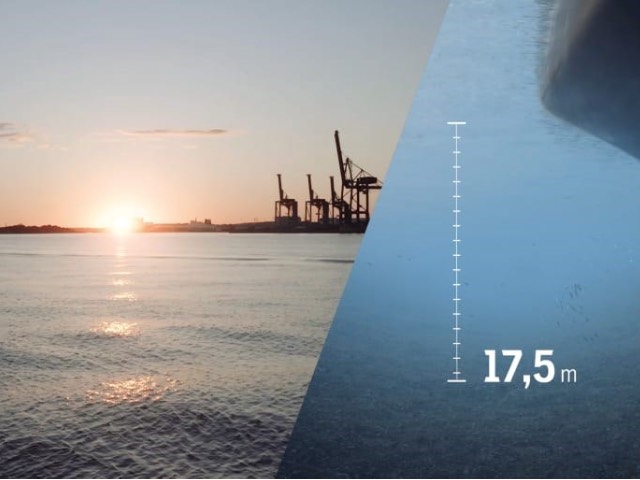
The fairway needs to be deepened to 17.5 metres if the world’s largest ocean-going vessels are to be able to call at the Port of Gothenburg fully loaded. This will prove crucial if Swedish industry is to have greater access to the world in the future. The Skandia Gateway project is already under way and construction is scheduled to begin during the first quarter of next year
“We are keeping to the timetable and looking forward to breaking ground. At the moment we are working with technical solutions, calculations, risk analyses, and other preconstruction work. The environmental permit process is taking place in parallel at the Land and Environment Court. We hope to secure an environmental permit in time for commencement of construction at the beginning of next year,” said Jan Andersson, Skandia Gateway Project Manager at the Gothenburg Port Authority.
The permit application was submitted to the Land and Environment Court just before Christmas last year, and during the spring additional documentation will be provided as necessary.
“Everything is proceeding according to plan and no unexpected opinions or objections have emerged. We are looking forward with confidence to seeing how the process will unfold as we move on to the main hearing,” said Kristina Bernstén, Skandia Gateway Sub-Project Manager, Environment, at the Gothenburg Port Authority.
Skandia Gateway has three funding bodies: the Swedish Transport Administration, the Swedish Maritime Administration, and the Gothenburg Port Authority. The port is responsible for the cost of reinforcing the quays and dredging the docks.
“We aim to build sustainably, which means that financial and environmental considerations are our first priority. We are choosing the construction materials carefully and we are conscious of the fact that the quays need to be fit for purpose for many generations to come. To ensure this, the focus in our technical solutions is firmly on life-cycle cost analyses with a 100-year horizon. A higher investment cost initially will be outweighed by lower maintenance costs over time,” said Jan Andersson.
A film has been made to show the need and the importance of having a deeper port area if Swedish industry is to develop in the future. The film explains the work behind increasing the depth of the docks and the fairway from the current 13.5 metres to 17.5 metres. Dredging six kilometres of fairway will result in the removal of 12 million cubic metres of clay. At Skandiahamnen, the existing terminal and 1.2 kilometres of quays will be reinforced to allow two ocean-going vessels to load and discharge at the same time. The first phase in the construction of Skandia Gateway is scheduled for completion in 2026.








































